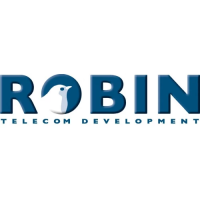
Do you have a question about the Robin EY40 and is the answer not in the manual?
Detailed technical specifications including bore, stroke, displacement, output, torque, and dimensions.
Definition and explanation of the engine's maximum power output capability.
Explanation of the engine's sustained power output for continuous operation.
Details on maximum torque and fuel efficiency at peak engine performance.
Highlights the engine's small size and light weight for easier mounting and handling.
Details features contributing to reduced noise and vibration levels during operation.
Explains the automatic decompression device and recoil starter for easy engine ignition.
Describes the engine's suitability for various applications due to different shaft types and options.
Emphasizes the use of quality materials and safety features for long-lasting performance.
Description of the one-piece aluminum diecast cylinder and crankcase structure.
Information on the aluminum diecast main bearing cover and its mounting features.
Details on the forged carbon steel crankshaft, including induction hardening.
Description of the forged aluminum alloy connecting rod and cast aluminum alloy piston.
Explanation of different camshaft materials and construction for various models.
Details on the aluminum diecast cylinder head and its combustion chamber design.
Description of the valve placement and how the exhaust valve is cooled.
Explanation of the centrifugal flyweight type governor for speed regulation.
Details on the balancer assembly that reduces vibration from reciprocating parts.
How the decompression device eases engine starting by releasing compression.
Description of the forced air cooling system using the fan and air guide plate.
Explanation of how oil is scooped and splashed to lubricate moving parts.
Details on the flywheel magneto ignition system and the optional S.S.I. system.
Information about the horizontal draft carburetor and its role in fuel-air mixture.
Details on the cyclone type semi-wet double element air cleaner used.
Explanation of the diode rectifier's role in converting AC to DC for battery charging.
A detailed cross-section diagram showing major engine components and their layout.
Guidelines and suggestions for safely disassembling and reassembling the engine.
List and description of specialized tools required for engine disassembly and maintenance.
Step-by-step instructions for disassembling the engine and its various components.
Step-by-step instructions for reassembling the engine after maintenance or repair.
Table detailing specific carburetor models, part numbers, and jet sizes for EY35 and EY40.
Explanation of how the float, pilot, and main systems within the carburetor function.
Step-by-step guide for taking apart and putting back together the carburetor.
Benefits of the S.S.I. system, including maintenance-free performance and reliability.
Explanation of the basic circuit diagram and operating principles of the S.S.I. ignition.
Procedure for testing the ignition unit's condition using a circuit tester.
Instructions for measuring the electrical resistance of ignition system coils.
Common causes and solutions for engine starting problems related to fuel, compression, and electrical systems.
Identifies common reasons for engine misfires and methods for correction.
Common causes for the engine unexpectedly stopping during operation.
Factors contributing to engine overheating and recommended corrective actions.
Identifies causes of engine knocking sounds, such as fuel quality or timing.
Common causes for the engine backfiring through the carburetor.
Guidelines for properly mounting the engine, considering position and foundation.
Importance of adequate fresh air for cooling and preventing vapor lock.
Recommendations for safely venting exhaust gases outdoors, including pipe specifications.
Instructions for installing the fuel tank and fuel line, noting height and diameter.
Considerations for connecting the engine to driven machinery, including belt drives.
Wiring diagrams for recoil starter and electric starter types, showing system connections.
Guidelines for choosing appropriate wire based on amperage, length, and resistance.
Routine checks and maintenance tasks to be performed daily for optimal engine condition.
Maintenance schedule for 20-hour intervals, focusing on crankcase oil changes.
Recommended maintenance tasks for every 50 hours or 10 days of operation.
Monthly maintenance schedule including fuel filter and contact breaker checks.
Semiannual maintenance tasks such as carbon deposit removal and carburetor cleaning.
Annual maintenance including overhauls, piston ring changes, and fuel pipe replacement.
Steps to take for protecting the engine during extended periods of non-operation.